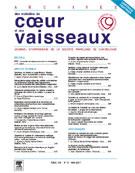03-25 - A HEAD TO HEAD COMPARISON OF NUCLEAR PHASE ANALYSIS AND TISSUE DOPPLER IMAGING FOR ASSESSING VENTRICULAR DYSSYNCHRONY IN PATIENTS WITH LEFT VENTRICULAR SYSTOLIC DYSFUNCTION - 09/04/08
Objectives: Ventricular dyssynchrony is often measured by tissue Doppler imaging (TDI), which assesses wall motion of a limited number of wall segments and over a single heart beat. Radionuclide angiography with nuclear phase analysis (NPA) can be used to quantify dyssynchrony of the entire ventricles, with data that are averaged over several minutes, discounting for factors such as heart rate and respiration. Agreement between these two techniques has not been evaluated.
Materials and methods: 31 patients (23 males, 64 ± 15yrs) with LVEF < 0.35 were assessed both by pulsed-wave TDI and NPA, with measurement of inter- and left intra-ventricular dyssynchrony. Normal cutoff values for these parameters were established in control groups, and used to define presence or absence of dyssynchrony in the patient population.
Results: NPA was more likely to show evidence of intra-ventricular dyssynchrony than TDI (see below). Agreement between the two techniques for diagnosing dyssynchrony was extremely poor (€ < 0.2 for all comparisons).
Conclusions: Diagnosis of dyssynchrony may differ considerably in a given patient according to the imaging technique used. These techniques may therefore not be used interchangeably. Accuracy for predicting clinical response to cardiac resynchronization therapy by NPA should be compared with that of TD in future studies.
© 2007 Elsevier Masson SAS. Tous droits réservés.
Vol 100 - N° 12
P. 1077 - décembre 2007 Retour au numéroBienvenue sur EM-consulte, la référence des professionnels de santé.

